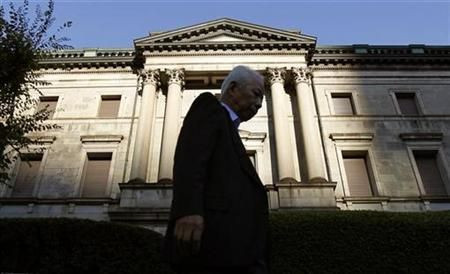Abenomics Stumbles As It Fails To Convince Corporate Japan
Markets are attuned to the unfolding of Prime Minister Abe’s second act

Prime Minister Shinzo Abe is the embodiment of the Japanese economic comeback story. After all, he himself has come back for a second round as the head of the world’s third-largest economy.
The last time Abe was prime minister of Japan he resigned, due to stress levels affecting his health. One stressor was the fact that he had the misfortune of following up Prime Minister Junichiro Koizumi -- the closest Japan has ever come to producing a bona fide political rock star.
Perhaps Abe hopes to become that political rock star himself. Japanese political pundits have pointed out that one of the main differences between Abe’s first term and this one is the inclusion of the man thought to be behind the Koizumi myth -- his former chief secretary, Isao Iijima. If rumors about an Abe Nobel Peace Prize nomination are true, he may already be on his way.
The Making Of Shinzo Abe 2.0
Shinzo Abe’s first tenure as prime minister was not as popular as his predecessor Koizumi’s, and was plagued by post-election scandals in the Agricultural Ministry. He stepped down in September 2007 after less than a year as leader. Abe’s abdication sent his Liberal Democratic Party, or LDP, on a downward spiral that eventually resulted in them losing the general elections to their longtime rivals, the Democratic Party of Japan, or DPJ -- the second time in modern history that the LDP has lost power to the DPJ.
Given his health history and unpopular first term it was completely unexpected to see Abe take such a bold stance regarding the Japanese economy during his campaign for the December 2012 election. The political and social climate had changed since 2007, and apparently, so had Abe.
It has become second nature for Japanese politicians to heap harsh criticism on the Bank of Japan, or BoJ. During the election, Abe went a step further and drew a line in the sand for the central bank, with a proposed inflation target of 2 percent and a two-year deadline to achieve the goal.
The then-current head of the BoJ was not expected to continue for another term, which gave Abe the opportunity to pick from a pool of candidates who subscribed to the feasibility of the 2 percent inflation target and the aggressive deadline. When the LDP went on to dethrone the DPJ with a majority, Abe was given the mandate to implement his candidacy rhetoric.
Bank of Japan Leads Abe’s Economic Charge
BoJ Gov. Haruhiko Kuroda served as the head of the Asian Development Bank before his central bank leadership candidacy was confirmed in February. He supports the goal to reach 2 percent inflation within two years and has followed through on Abe’s promise with a stimulus plan that will double Japan’s monetary base and end inflation.
The market has reacted by keeping the yen in the same direction that Abe has pointed to with his statements: down. In the six months that Abe has been in power, the yen has fallen more than 25 percent versus the U.S. dollar. A weaker currency has helped to boost exports and drive the local stock exchange to five-year highs.
In order for those trends to continue, however, they must be followed by deeper structural changes. Though the Japanese trade deficit continues to expand as import prices inch upward, the Abe government is optimistic about its three-part approach to fixing the Japanese economy via three “arrows”: monetary stimulus, government spending, and structural reforms.
The Struggle To End Inflation
To date, the yen’s fall against the American dollar can be attributed to three driving forces: the BoJ’s inflation-focused monetary policy; the tacit approval by the Group of Seven on the BoJ’s actions; and a moderate American economic recovery which translates into increasing demand for Japanese goods.
Two out of three of the factors are external and because the latest economic indicators have cast shadows over both U.S. recovery and the impact of Japanese stimulus, the yen has more recently strengthened versus the U.S. dollar. It remains to be seen how long the G7 can remain silent on Japanese currency intervention. In fact, they may not have to if Abe fails to get consumers and corporations to spend in Japan.
Unless the Abe government can convince its own citizens and Japanese corporations that the looming threat of deflation has been quelled, the yen’s U.S. dollar exchange could face a lightning-fast reversal and jeopardize the economic recovery plan.
Japanese corporations have not reinvested profits, boosted by the weak yen, back into the economy. Investment fell by 4.9 percent in the first quarter of 2013. Corporate Japan still sees Abe’s plan as risky and volatile unless reforms are introduced.
Abe has countered with his third “arrow”: A promise of structural reforms and deregulation, with lowering corporate taxes at the top of the to-do list. The Japanese economy runs the risk of corporates choosing to reinvest their profits abroad and miss out on the growth opportunity if it fails to change the current tax system.
Alfonso Esparza, a senior currency strategist at OANDA, specializes in macro forex strategies for North American and major currency pairs. Upon joining OANDA in 2007, he established the MarketPulseFX blog and he has since written extensively about central banks and global economic and political trends. Follow Alfonso on Twitter @alfonso_forex and Google+.
© Copyright IBTimes 2025. All rights reserved.





















